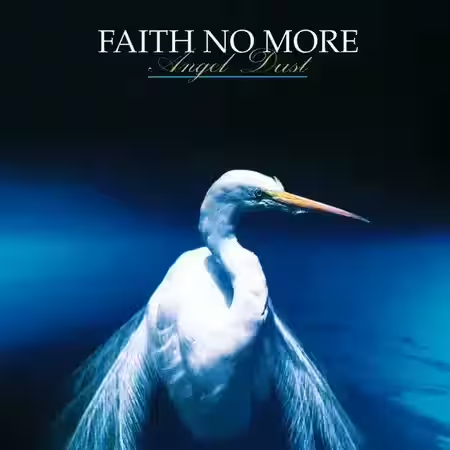
Introduction
Released on 13 September 2010, Linkin Park’s A Thousand Suns marked a bold departure from their established sound, embracing an experimental and conceptual approach that captivated and divided fans alike. Produced by Rick Rubin and Mike Shinoda, the album was recorded at NRG Recording Studios in North Hollywood, California. This work stands as a significant moment in the band’s evolution, blending alternative rock, electronic, and art rock elements to explore themes of human fear and technology’s impact on society.
This article will delve into the genesis, recording process, commercial performance, and legacy of A Thousand Suns. We will explore its creation, the singles it spawned, its critical reception, and its place in music history. By the end, you’ll have a comprehensive understanding of why this album remains a pivotal work in Linkin Park’s discography.
| Attribute | Details |
|---|---|
| Release date | 13 September 2010 |
| Album title | A Thousand Suns |
| Genre | Alternative rock, electronic rock, experimental rock, industrial rock, art rock, progressive rock, rap rock |
| Total runtime | 47:48 |
| Number of tracks | 15 |
| Record label | Warner Bros., Machine Shop |
| Recording studio | NRG Recording Studios, North Hollywood, California |
| Producer(s) | Rick Rubin, Mike Shinoda |
The album’s impact was immediate and lasting, debuting at number one on over ten charts and achieving platinum certification in the United States. Its exploration of themes such as nuclear warfare and the human condition resonated with audiences and critics alike. As Chester Bennington stated, “It was an inspiring idea, and it was something we could relate a lot of the things we like to write about to.”
If you’re interested in exploring more about Linkin Park’s journey, consider checking out our podcast episode on Hybrid Theory.
The Genesis of “A Thousand Suns”
The creation of A Thousand Suns was influenced by a rapidly changing musical landscape and the band’s desire to evolve. Prior to this album, Linkin Park had already made significant strides with their earlier works, such as Hybrid Theory and Meteora. These albums established their signature blend of nu-metal and rap rock, but the band was eager to push their boundaries further.
The cultural environment leading up to the album’s release was marked by technological advancements and societal concerns, which influenced the thematic direction of the album. The title, A Thousand Suns, is a reference to a line from the Hindu scripture Bhagavad Gita, famously quoted by J. Robert Oppenheimer when describing the atomic bomb. This allusion set the stage for an album deeply rooted in the exploration of human fears and the intersection of humanity and technology.
Linkin Park’s lineup for this album included Chester Bennington (vocals), Mike Shinoda (vocals, keyboards, guitar), Brad Delson (guitar), Dave “Phoenix” Farrell (bass), Rob Bourdon (drums), and Joe Hahn (turntables, samples). The album was produced by Rick Rubin and Mike Shinoda, both of whom played crucial roles in shaping its sound and concept.
| Band Member | Instrument/Role |
|---|---|
| Chester Bennington | Vocals |
| Mike Shinoda | Vocals, Keyboards, Guitar |
| Brad Delson | Guitar |
| Dave “Phoenix” Farrell | Bass |
| Rob Bourdon | Drums |
| Joe Hahn | Turntables, Samples |
The album’s financial backing came from Warner Bros. Records and Machine Shop, with a substantial budget allocated for its production. Despite this, the band faced challenges in maintaining their artistic vision while adhering to financial constraints. The album artwork, designed by the band and various artists, reflects the conceptual nature of the music, featuring abstract imagery that complements its themes.
Recording Process
The recording sessions for A Thousand Suns were as innovative as the album itself. Taking place at NRG Recording Studios in North Hollywood, California, these sessions spanned from November 2008 to August 2010. NRG Studios, known for its state-of-the-art facilities, provided the perfect environment for the band’s experimental approach.
Key personnel in the recording process included producers Rick Rubin and Mike Shinoda, alongside engineers who helped bring the album’s complex soundscapes to life. Rubin, renowned for his minimalist production style, had previously worked with a diverse range of artists, while Shinoda’s technical prowess and creative vision were instrumental in shaping the album’s direction.
| Equipment | Details |
|---|---|
| MPC1000 | Drum machine/sampler used by Mike Shinoda |
| Access Virus TI Polar, Roland Juno-106, Moog Voyager | Keyboards used in recording |
| M-Audio Axiom Pro 61 | MIDI controller |
| SSL X-Racks | Mixing equipment with various input and dynamics modules |
| ADAM A7s and Mackie HR824s | Studio monitors |
The sessions were not without their challenges. The band sought to break free from their previous sound, leading to moments of creative tension. However, these challenges ultimately contributed to the album’s innovative nature. Rubin’s previous work with artists like Radiohead on OK Computer provided a framework for embracing experimentation and pushing boundaries.
Other Albums Produced by Rick Rubin and Mike Shinoda
| Producer | Artist | Album | Year |
|---|---|---|---|
| Rick Rubin | Beastie Boys | Licensed to Ill | 1986 |
| Rick Rubin | Red Hot Chili Peppers | Blood Sugar Sex Magik | 1991 |
| Rick Rubin | Johnny Cash | American Recordings | 1994 |
| Rick Rubin | Linkin Park | Minutes to Midnight | 2007 |
| Mike Shinoda | Fort Minor | The Rising Tied | 2005 |
Commercial Performance and Reception
Upon its release, A Thousand Suns achieved considerable commercial success, debuting at number one on the Billboard 200 and several other charts worldwide. Its ambitious sound and thematic depth resonated with a wide audience, resulting in over 2 million sales globally. The album was certified platinum in the United States in 2017, reflecting its enduring appeal.
In terms of competition, the album faced a challenging landscape. Other significant releases in 2010 included My Beautiful Dark Twisted Fantasy by Kanye West and The Suburbs by Arcade Fire, both of which garnered critical acclaim and commercial success. Despite this, A Thousand Suns held its ground, receiving praise for its innovation and thematic coherence.
| Album Title | Sales | Year |
|---|---|---|
| A Thousand Suns | 2,074,477 | 2010 |
| Hybrid Theory | 27,000,000 | 2000 |
| Meteora | 11,292,487 | 2003 |
| Minutes to Midnight | 7,815,000 | 2007 |
The album’s accolades include a Grammy Award for Best Rock Album, underscoring its impact and critical recognition. It was also praised for its innovative approach, with critics highlighting its seamless blend of genres and thought-provoking themes.
Other albums released in 2010:
- My Beautiful Dark Twisted Fantasy by Kanye West [Physical Sales: 1.2 million]
- The Suburbs by Arcade Fire [Physical Sales: 500,000]
- Recovery by Eminem [Physical Sales: 3.4 million]
The awards and certifications for A Thousand Suns include multiple platinum and gold statuses in countries such as the United States, United Kingdom, and Germany, further cementing its place in the band’s storied career.
Singles and Track Analysis
A Thousand Suns produced several singles that captured the essence of the album’s thematic depth and musical innovation. These singles not only contributed to the album’s commercial success but also showcased Linkin Park’s evolving sound and lyrical exploration.
The album’s singles included “The Catalyst,” “Waiting for the End,” “Burning in the Skies,” and “Iridescent.” Each single demonstrated a unique facet of the album’s overarching narrative, blending electronic elements with rock and hip-hop influences.
| Track Name | Length | Writing Credit |
|---|---|---|
| The Requiem | 2:01 | Linkin Park |
| The Radiance | 0:57 | Linkin Park |
| Burning in the Skies* | 4:13 | Linkin Park |
| Empty Spaces | 0:18 | Linkin Park |
| When They Come for Me | 4:55 | Linkin Park |
| Robot Boy | 4:29 | Linkin Park |
| Jornada Del Muerto | 1:34 | Linkin Park |
| Waiting for the End* | 3:51 | Linkin Park |
| Blackout | 4:39 | Linkin Park |
| Wretches and Kings | 4:10 | Linkin Park |
| Wisdom, Justice, and Love | 1:38 | Linkin Park |
| Iridescent* | 4:56 | Linkin Park |
| Fallout | 1:23 | Linkin Park |
| The Catalyst* | 5:39 | Linkin Park |
| The Messenger | 3:01 | Linkin Park |
Note: Tracks marked with * were singles. “The Catalyst” peaked at No. 1 on the Billboard Alternative Songs chart, while “Waiting for the End” reached No. 1 on both the Billboard Alternative Songs and Rock Songs charts.
Influences and Legacy
The musical influences behind A Thousand Suns were as diverse as the album itself. Drawing inspiration from a range of artists and genres, Linkin Park crafted a sound that was both familiar and groundbreaking. The album’s eclectic mix of alternative rock, electronic, and industrial elements was influenced by bands like Nine Inch Nails and Radiohead, as well as the hip-hop group Public Enemy.
Following its release, A Thousand Suns left a lasting impact on the music industry, inspiring a new generation of artists to explore similar themes and sounds. Its exploration of complex issues through a conceptual lens set a precedent for future works in the rock and electronic genres.
| Influences on “A Thousand Suns” | Artists Influenced by “A Thousand Suns” |
|---|---|
| Nine Inch Nails | Imagine Dragons |
| Radiohead | Bring Me the Horizon |
| Public Enemy | Twenty One Pilots |
Released in 2010, A Thousand Suns coincided with significant global events, including the devastating earthquake in Haiti and the release of the first iPad. Culturally, the year saw the rise of social media platforms like Instagram, which launched in October, and the global phenomenon of the FIFA World Cup in South Africa.
For a deeper dive into the influences and legacy of A Thousand Suns, you can explore our article on Hybrid Theory.
Five Things about A Thousand Suns
As we explore the intricate details of A Thousand Suns, here are five intriguing facts that highlight the album’s unique characteristics and the innovative spirit of Linkin Park.
| Fact | Details |
|---|---|
| Conceptual Album | The album is a conceptual exploration of human fears and technological impact, inspired by J. Robert Oppenheimer’s quote about the atomic bomb. |
| Unique Sound | The album marked a departure from the band’s previous nu-metal sound, incorporating electronic and industrial rock elements. |
| Recording Challenges | The band faced creative tensions during the recording process, pushing them to innovate and experiment with new sounds. |
| Chart Success | “The Catalyst” and “Waiting for the End” both reached No. 1 on the Billboard Alternative Songs chart. |
| Grammy Recognition | The album won a Grammy Award for Best Rock Album, underscoring its critical acclaim and impact. |
Media and Television Usage
While A Thousand Suns was a groundbreaking album, it appears that its tracks were not widely used in media or television. Despite its cinematic and thematic depth, the album’s songs were not featured in any major films or TV shows according to available data.
Critical Reviews and Retrospectives
A Thousand Suns received a mixed but generally positive response from critics upon its release. The album was praised for its ambitious concept and innovative sound, though some reviewers noted its departure from Linkin Park’s earlier style as polarizing for fans.
The Metacritic score for the album stands at 66, indicating generally favorable reviews. Critics highlighted the album’s thematic depth and experimental approach, with publications like Sputnikmusic and Plugged In offering detailed analyses of its content and impact.
| Publication | Review Score | Notable Quote | Source |
|---|---|---|---|
| Kerrang! | 80 | “A remarkable evolution of their sound.” | Metacritic |
| Entertainment Weekly | 75 | “A jarring mix of styles but with emotional catharsis.” | Metacritic |
| Sputnikmusic | 70 | “A complex and ambitious album.” | Sputnikmusic |
| Plugged In | N/A | “Explores themes of apocalyptic destruction and hope.” | Plugged In |
After A Thousand Suns
Following the release of A Thousand Suns, Linkin Park continued to evolve both musically and as a band. Their subsequent albums, such as Living Things and One More Light, further explored electronic and pop influences, showcasing the band’s willingness to adapt and innovate.
Tragically, the band faced a significant loss with the passing of lead vocalist Chester Bennington in 2017. This event deeply affected the band and its fanbase, leading to a hiatus as they processed their grief and considered their future.
In an exciting development for fans of both Linkin Park and Dead Sara, the iconic nu-metal band has reformed with Emily Armstrong as their new lead vocalist. Armstrong, known for her powerhouse vocals and raw energy, brings a fresh dynamic to the band following the tragic passing of Chester Bennington in 2017.
This collaboration has sparked anticipation as Armstrong’s gritty, emotive style complements Linkin Park’s signature blend of alternative rock, electronic elements, and introspective lyrics. Fans eagerly await their new album, hopeful that this partnership will lead to a reinvention of the band’s sound while honouring their legacy.
Conclusion
A Thousand Suns remains a landmark album in Linkin Park’s discography, celebrated for its ambitious concept and innovative sound. Its exploration of complex themes and its blend of diverse musical influences continue to resonate with audiences, ensuring its relevance in the ever-evolving landscape of rock music.
For further reading, explore our related content:
- Our article on Minutes to Midnight
- Our article on Hybrid Theory
- Our article on Meteora
- Wikipedia page for “A Thousand Suns”
- Official Linkin Park website
- Record label’s website
Let us know in the comments what your thoughts are on A Thousand Suns by Linkin Park. Did we miss anything? Share your experiences and join the conversation!
![The Catalyst [Official Music Video] - Linkin Park](https://i.ytimg.com/vi/51iquRYKPbs/hqdefault.jpg)



